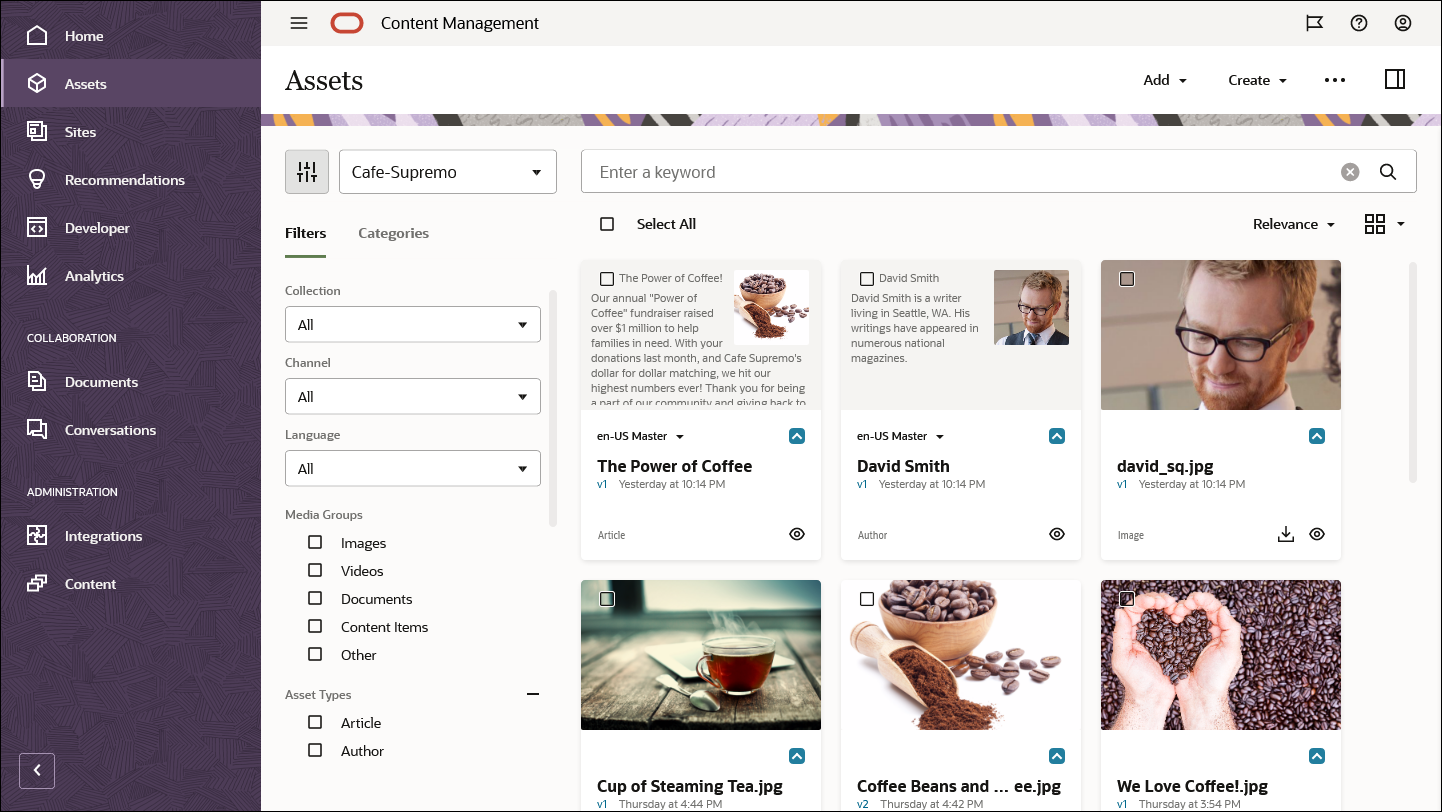Asset Repositories
An asset repository is basically a big "bucket" in which content is managed. It's a container of all assets that an organization or team needs to work with—a conceptual entity that helps them organize and manage content.
Consider different departments in a company, such as sales, finance, and marketing. All these departments have their own teams of people working on content. Content from the finance department may not be relevant (and sometimes not even accessible) to people in the sales department, at least during part of the content life cycle. Content used by the marketing department can be accessible to teams working in other departments, but restricted only to review and not to modify or to publish.
Asset repositories help model the content in such scenarios. An organization could create separate repositories for each department and assign their respective teams as users of that repository with specific rights. When users sign in to Oracle Content Management, they are assigned to relevant repositories, and access privileges are granted to them for repositories, to allow for contribution, review, or approval. Some users might be involved with more than one department and may need access to content in multiple repositories.
All aspects of the content life cycle—including management, workflow, publishing, and revision tracking—are available in the context of asset repositories that assets are part of.
It's important to note that content delivery has no concept of repositories; published content is published to a channel regardless of which asset repository content originates from.

Description of the illustration asset-repository.png
Administratively, a number of other entities are explicitly assigned to asset repositories:
- Content types are assigned to a repository to control which kinds of content can be created in that repository. This is helpful in controlling which types matter to a specific domain that the repository is supposed to work with.
- Channels are assigned to a repository to control the publishing targets for content in that repository.
- Taxonomies can be assigned to a repository, which allows authors to classify content in that repository. Additionally, the management interface shows classified content in a category view.
Please note that these are many-to-many relationships:
- A repository can publish to any number of channels, and a channel can be enabled for any number of repositories.
- Asset types are shared between repositories for which they are enabled.
- Taxonomy definitions can be shared between repositories.
Asset repositories are silos, which means that content from one repository can't be seen or referenced by another repository. It must be copied into another repository. On the other hand, assets from multiple repositories can be published to the same channel. This means that even though content in repositories is managed in silos, they can be consumed together in clients.
An asset repository is also a place for a number of other configuration settings:
- An asset repository controls which languages are available for content authors to create content in. Each repository also has a default language, which is the language that’s assumed for all content if no language is specified.
- Configuration of content connectors, which are used to bring data into Oracle Content Management from an external system.
- On/off control of smart content discovery, which includes the ability to automatically tag content and search by them, recommend assets based on the content topic, and much more. This switch enables or disables certain background processing of content for enrichment and discovery as well as behavior of the user interface and supporting APIs to surface relevant content.
Learn More...